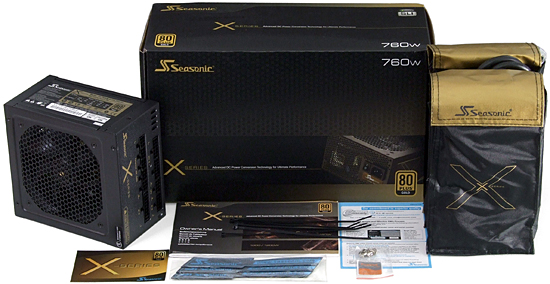Four ATX Cases For High-Capacity Water Cooling, Reviewed
Big radiators need lots of space that most enclosures simply weren't designed to offer. We're using Swiftech’s latest triple-fan cooler to test the fitment and performance in four cases supposedly set up to accommodate high-end water cooling setups.
Test Settings And Benchmarks
| Test System Configuration | |
|---|---|
| CPU | Intel Core i7-3960X (Sandy Bridge-E): 3.30 GHz, Six Cores O/C to 4.80 GHz (48 x 100 MHz) at 1.45 V Core |
| CPU Cooler | Swiftech H20-320 Edge HD Liquid Cooling Kit |
| Motherboard | Asus P9X79 WS: LGA 2011, Intel X79 Express, Firmware 0603 (11-11-2011) O/C at 100 MHz BCLK |
| RAM | G.Skill F3-17600CL9Q-16GBXLD 16 GB (4 x 4 GB) DDR3-2200 Benchmarked at DDR3-1600 CAS 9 defaults |
| Graphics | 2 x Nvidia GeForce GTX 580: 772 MHz GPU, GDDR5-4008 Maximum Fan for Thermal Tests, SLI |
| Hard Drives | Samsung 470 Series MZ5PA256HMDR, 256 GB SSD |
| Sound | Integrated HD Audio |
| Network | Integrated Gigabit Networking |
| Power | Seasonic X760 SS-760KM ATX12V v2.3, EPS12V, 80 PLUS Gold |
| Software | |
| OS | Microsoft Windows 7 Ultimate x64 |
| Graphics | Nvidia GeForce 295.73 WHQL |
| Chipset | Intel INF 9.2.3.1020 |
While our Core i7-3960X heats up the radiator, a pair of GeForce GTX 580 graphics cards heat up the inside of our case. Maximum graphics fan speed make thermal and temperature testing consistent at full load, while automatic graphics fan mode and a long idle period brought down temperatures and fan speed for our idle noise tests.
Almost amazingly, this lab’s reference Seasonic X760 power supply continues to drive unreasonable loads throughout our torture tests.
| Benchmark Configuration | |
|---|---|
| Prime95 v25.8 | 64-bit executable, Small FFT's, Seven threads |
| FurMark 1.6.5 | Windowed Mode, 1920x1080, 4X AA, Stability Test, Maximum temperature |
| RealTemp 3.40 | Average of maximum core readings at full CPU load |
| Galaxy CM-140 SPL Meter | Tested at 1/2 m, corrected to 1 m (-6 db), dBA weighting |
Get Tom's Hardware's best news and in-depth reviews, straight to your inbox.
Current page: Test Settings And Benchmarks
Prev Page Building With NZXT's Switch 810 Next Page Temperature, Noise, And Acoustic Efficiency-
EzioAs Too bad we can't see the full build on the cosmos II. Maybe cooler master should have sent the storm trooper insteadReply -
wolfram23 Should have put the rad in the bottom of the Cosmos II by removing the HDD trays. Seems like it should fit there.Reply
Also, Swiftech makes a sweet kit although I can't imagine the size of the triple rad. Using the Edge 220 myself, love it. Fits in my Antec 900 II. -
wolfram23Should have put the rad in the bottom of the Cosmos II by removing the HDD trays. Seems like it should fit there.Also, Swiftech makes a sweet kit although I can't imagine the size of the triple rad. Using the Edge 220 myself, love it. Fits in my Antec 900 II.The Cosmos II only accepts a 2 X 120 rad in the HDD compartment. Its too bad that toms wasn't able to complete the build in the cosmos II. Maybe within the end of the year, Cooler Master will introduce the Cosmos S II and fix all those enthusiast complains that i read.Reply
-
hellfire24 i would take Switch!it's a personal choice no offence to others they are great too.Reply -
theuniquegamer The Nzxt switch 810 is a good overall case. Too bad they can't fit the rad to cosmos ii . May be they should try the svgtech h80 triple rad air cooler .Reply -
theuniquegamer The Nzxt switch 810 is a good overall case. Too bad they can't fit the rad to cosmos ii . May be they should try the svgtech h80 triple rad air cooler .Reply -
Crashman theuniquegamerThe Nzxt switch 810 is a good overall case. Too bad they can't fit the rad to cosmos ii . May be they should try the svgtech h80 triple rad air cooler .Guys, I'm collecting suggestions for future uses of the left-over Cosmos II.Reply
1.) Yes it supports STANDARD 3-fan radiators. It just couldn't be compared to other cases if it had a different cooling system.
2.) It can probably also be MODIFIED to fit the radiator used in the article.
So, do you have a custom system suggestion? or are you looking for a modification article? Like I said, I'm taking suggestions. Thanks! -
EzioAs For the Cosmos II, try doing a full build with a standard 360 rad in the top and a 240 rad in the bottom compartment with a 3960X cpu and 2 LCS 7970 from powercolor to show the lowest temps and highest overclock on custom watercooling build. Maybe do an extreme build guide or something like that with the cosmos II. Just a suggestionReply -
acekombatkiwi1 If you want to stick with Swiftech gear use the 240 edge kit down the bottom with a Swiftech 360 QP up top.Reply -
koogco It seems a bit silly to use a rad with bits tagged on the end, since most good cases would be designed without those bits in mind. I can see the apeal of using something that is almost like closed loop, but using one of the optical-bay resevoirs with built in pump might have put you fairly close aswell.Reply
I would like to see what else you can do with the Cosmos II, perhaps a 240+360rad built with just that case as others suggested.

